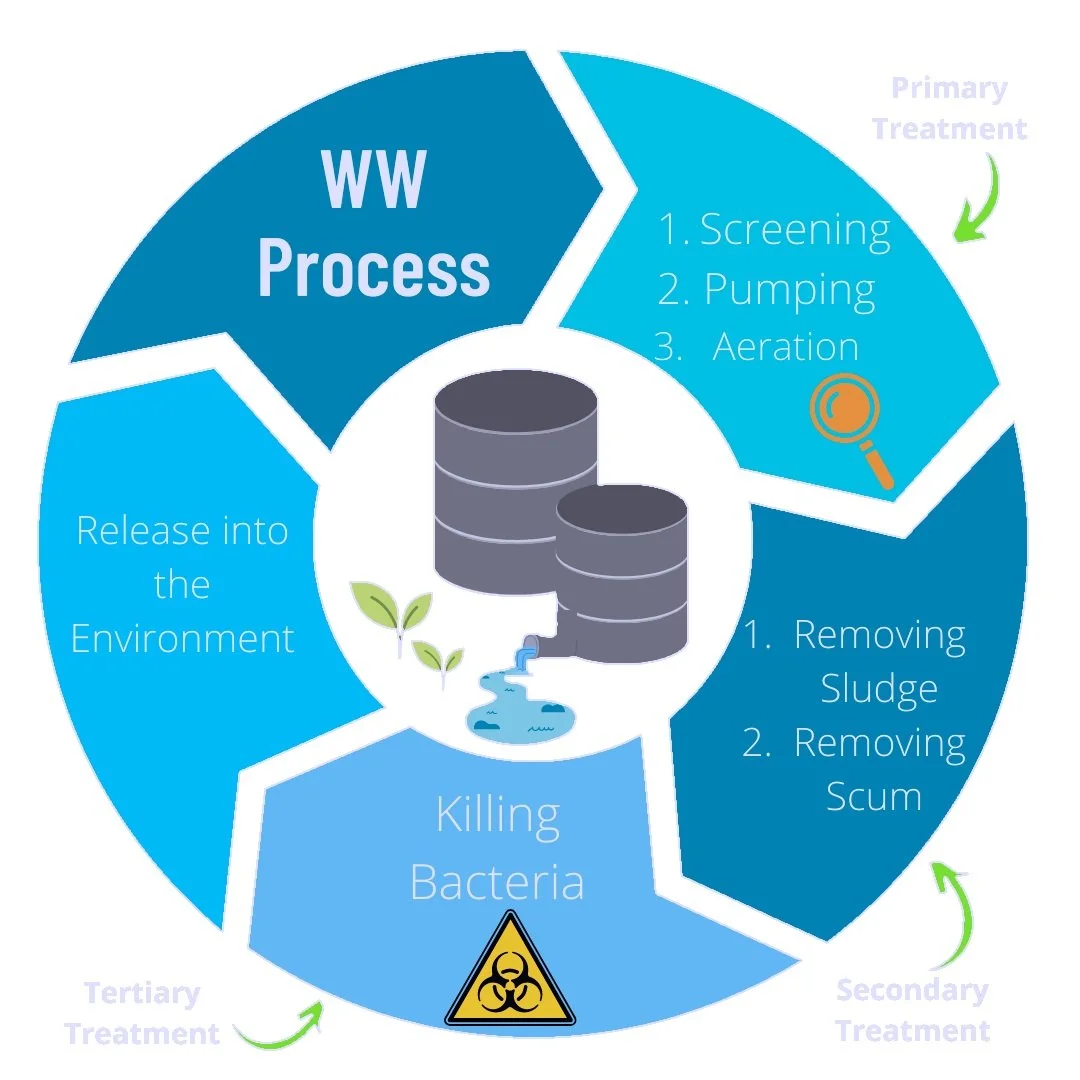Wastewater
What is Wastewater?
Wastewater is water that is full of wastes (feces, oils, soaps, etc.) that are gathered up in a water tank from sewage pipe lines connecting to every sink, toilet, shower drain, storm drain, etc.
What happens to Wastewater in these tanks?
Wastewater is full of toxins, feces, chemicals and many other wastes that have made it to the water by natural or human activities. Water that is collected must eventually be released to the environment, but before that can happen, the water must be treated at WW plants.
The Process
Primary Treatment
Screening – screening of water occurs during primary treatment to remove large elements such as dead rodents, plastic containers, trash bags, etc.
Pumping – wastewater gets pumped from sewage lines to aeration tanks to prepare for cleaning
Aeration – air is pumped into the water to break down organic material
Secondary Treatment
Removing of sludge – the removal of sludge happens in the sedimentation tanks. Sediments are pumped out of the tank; this process is called thickening which is then processed into digester tanks.
Removing scum – grease, oil, micro-plastics, plastics, and soap are all types of scum that are within wastewater. Rakes “scum off” the surface of the water to remove debris that has risen to the surface of the water.
Tertiary Treatment
Killing Bacteria – before being released back into the environment, the wastewater is transferred into a chlorine contact tank. Chlorine is added to the water for its final treatment to kill any remaining bacteria that is still present in the water.
Finally, after waste water has gone through its whole treatment and has passed its inspections, it is then ready to be released safely back into the environment.
What happens to the solid “sludge” material at the end of the process?
Digester tanks continue to hold solid material from the treated water for about “20-30 days” and then send it to landfills or to distributors as a natural fertilizer.
WW Management
The EPA – U.S. Environmental Protection Agency – enforces regulations for WW plants upon the Clean Water Act (CWA) and the Safe Drinking Water Act (SDWA). This agency focuses on the cleanliness of water within wastewater tanks before being released into the environment.
In order for water to be released, discharge regulations must be met. Discharge regulations are different for every industry and environment the water is being released into.
“Effluent guidelines are national regulatory standards for wastewater discharged to surface waters and municipal sewage treatment plants. EPA issues these regulations for industrial categories, based on the performance of treatment and control technologies.” (2)
Latitudes performs wastewater permitting following CWA requirements for various wastewater treatment facilities; such as publicly owned treatment works (POTW), privately owned works (for communities or subdivisions), and industrial facilities throughout the United States.
References


